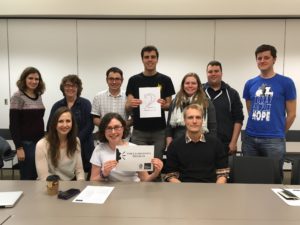On Tuesday 31st January we had the second session of the Voice & Influence program. This time the topic was about building effective networks – very timely for me as I approach the end of my PhD and think about finding a job.
We learnt about the three different kinds of networks: operational (day-to-day relationships at work), personal (friends, family and informal relationships), and strategic, the most important for career advancement. We learnt three properties of good strategic networks: they are broad (it is helpful to have a diverse range of contacts, not just ‘people li ke me’); connective (contain people with links to other groups), and dynamic.
ke me’); connective (contain people with links to other groups), and dynamic.
We had some useful group discussion about networking experiences, how to network effectively, and how to appropriately maintain professional relationships. We also discussed a list of tips explaining how not to be a network leech. We decided some of these tips may be less appropriate in an academic setting (such as paying for someone’s help a second time you seek it), but found some very applicable, such as preparing a list of questions in advance.
I found it particularly useful to hear advice from the group on how they use LinkedIn to support their networking, which is something I will take forward and use myself. We also reflected on the importance of noticing one’s own value to the network, which helps to balance the perceived inauthenticity or coldness of trying to connect with someone you identify as valuable to you. As I look back on my PhD, I have found networking easier as I have progressed, and one reason for this is that I feel like I now have more to offer the community. However, perhaps I should have begun valuing myself sooner!
Our next session will be Tuesday 14th February, 4pm, in the Large Boardroom, Founders. All postgraduate students and staff in the School of Mathematics and Information Security are welcome to attend, and we hope to see many of you there.
Rachel Player
